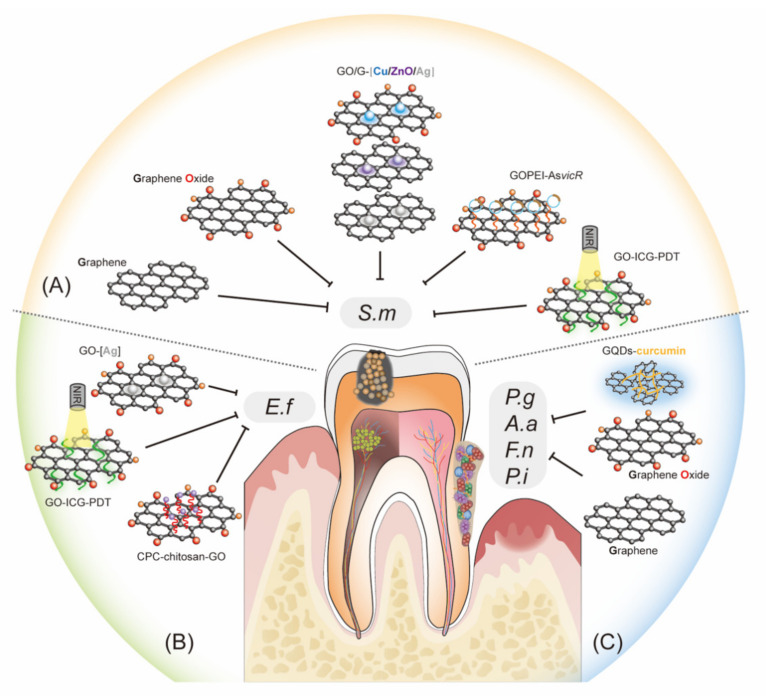Figure 1.
Graphene-based materials can inhibit oral bacteria. (A) Inhibiting cariogenic bacteria: graphene (G) and graphene oxide (GO) may directly inhibit S. mutans and indirectly suppress S. mutans by enhancing the antibacterial properties of metallic nanomaterials such as silver (Ag), copper (Cu), and zinc oxide (ZnO) nanoparticles. GO may also be combined with new technologies to achieve its antibacterial activity against S. mutans by delivering nucleic acids and photosensitizers. (B) Control dental pulp infection: Ag–GO particles, calcium phosphate cement (CPC) incorporated with chitosan and GO (CPC–chitosan–GO), and antimicrobial photodynamic therapy (PDT) using indocyanine green (ICG) as a photosensitizer delivered by GO (GO–ICG–PDT) can effectively reduce the biovolumes of E. faecalis. (C) Suppression of periodontal pathogens: GO, G, and graphene quantum dots (GQDs) coupled with curcumin (GQDs–curcumin) may inhibit the growth and multispecies biofilm formation of periodontal pathogens, such as P. gingivalis, A. actinomycetemcomitans, F. nucleatum, and P. intermedia. S.m, Streptococcus mutans; E.f, Enterococcus faecalis; P.g, Porphyromonas gingivalis; F.n, Fusobacterium nucleatum; A.a, Aggregatibacter actinomycetemcomitans; P.i, Prevotella intermedia; PEI, polyethylenimine; AsvicR, Antisense vicR RNA.

